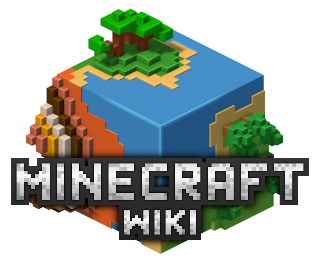| Deze pagina heeft vertaling nodig Deze pagina bevat te veel woorden uit een andere taal.
|
| Dit artikel moet mogelijk worden opgeschoond om te voldoen aan de schrijfwijzer. Help ons alstublieft deze pagina te verbeteren. De overlegpagina kan suggesties bevatten.
|
Item durability is a property to which certain crafted items, including all tools, weapons and armor, as well as certain other usable items, are subject. It represents the number of useful actions an item can perform and depletes upon item use. For tools and weapons, item durability represents the number of available uses before the tool is destroyed. For armor, it represents the amount of damage that can be absorbed before the armor is destroyed.
The remaining durability of any item can be seen by looking at the item's durability bar on the bottom of the item icon in the inventory and action bar. An item that has not once been used will not display a durability bar. As the item's durability decreases, the bar shortens right to left, changing color from green to red. When the item has only small number of uses left the durability bar is an empty grey line.
Armor durability[]
Armor durability is based on the armor's type (head, torso, legs, feet) and material (leather, gold, iron, diamond). Any time you take damage, each piece of armor you are wearing loses durability equal to the number of half-hearts of the base damage.
Armor durability only decreases when its wearer takes damage that the armor is capable of reducing. This includes:
- Direct attacks from mobs and other players
- Getting hit with an arrow or fireball (either Ghast or Blaze)
- Touching a block of fire, lava, or cactus
- Explosions
The following types of damage are not reduced by armor and have no effect on the armor's durability (unless it has an enchantment for some):
- Ongoing damage from being on fire
- Suffocating inside a block
- Drowning in water
- Starvation
- Fall damage (Although the enchantment "Feather Falling" Will decrease the fall damage.)
- Falling into the Void
- Poisoning e.g. from a Cave Spider bite or a Potion of Poison
- Instant damage from a Potion of Harm
| Deze sectie vereist uitbreiding. Je kan ons helpen door het te vergroten.
|
Values represent the numerical durability value as stored in the level/player files.
Note that every time the player takes damage that armor is capable of reducing (zie § Armor durability), it counts as two points of durability damage.
| Leather | Gold | Chainmail | Iron | Diamond | |
|---|---|---|---|---|---|
| Helmet | 56 | 78 | 78 | 166 | 364 |
| Chestplate | 82 | 114 | 114 | 242 | 529 |
| Leggings | 76 | 106 | 106 | 226 | 496 |
| Boots | 66 | 92 | 92 | 196 | 430 |
Tool durability[]
Values stand for the number of useful actions that tool can perform.
| Gold | Wood | Stone | Iron | Diamond | |
|---|---|---|---|---|---|
| Durability | 33 | 60 | 132 | 251 | 1562 |
Gold tools destroy blocks faster than any other tools.
Next table denotes how many uses remain in a tool the moment its durability bar appears empty.
| Gold | Wood | Stone | Iron | Diamond | |
|---|---|---|---|---|---|
| Durability | 2 | 3 | 6 | 10 | 61 |
Flint and Steel has a durability of 65, Fishing Rods have a durability of 65*, Shears have a durability of 239, and Bows have a durability of 385.
Successfully fishing a fish counts as one use, reeling the fishing rod while it is stuck to a block counts as two uses, reeling any mob counts as three uses.
Using a tool for a task it is not suited for (e.g., mining stone with an axe, digging sand with a sword, attacking a mob with a pickaxe, etc.) counts as two uses.
History[]
Prior to Beta 1.2, tools had a much lower durability
| Gold | Wood | Stone | Iron | Diamond | |
|---|---|---|---|---|---|
| Durability | 16 | 32 | 64 | 128 | 256 |
Golden tools also acted like wooden ones (they kept their low durability after Beta 1.2).
Prior to Beta 1.2 (single player) and 1.0 (multiplayer), when a tool broke, the game considered the last block broken as if it had been done with your hands, often not causing a drop.

The formula previously used to determine armor points.
Before 1.9 Prerelease 1, all armor materials offered the same base number of armor points, and the effective armor points of a character were equal to the sum of the base armor point values, times the sum of the current durabilities, divided by the sum of the base durabilities. This led to some interesting cases where a single, badly damaged piece could reduce total armor points or a single, high-quality piece of armor could be greatly augmented with a set of low-quality, low-tier armor.
See also[]
- Item Repair
